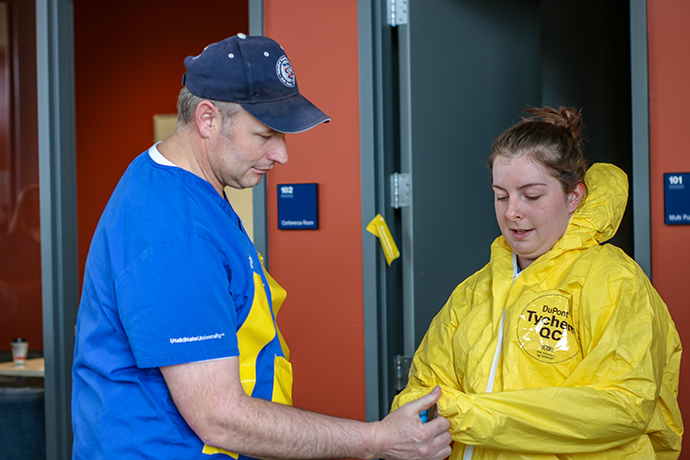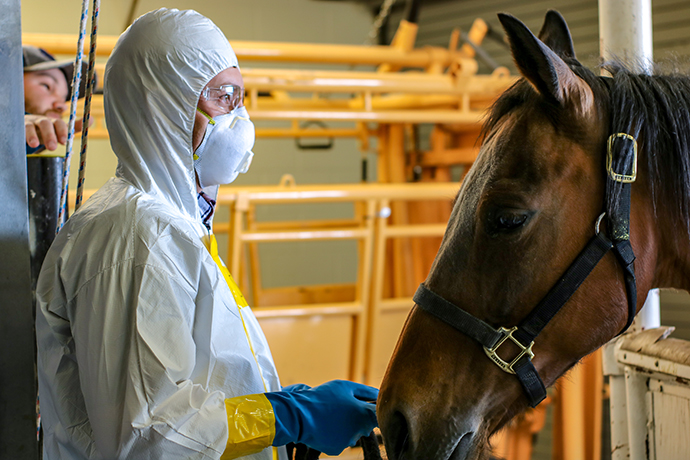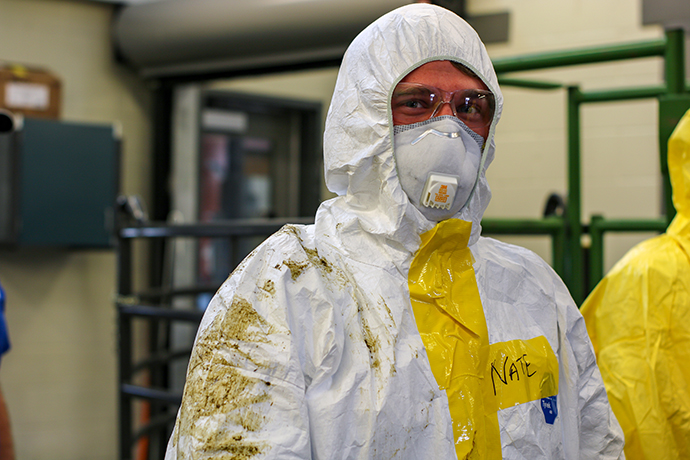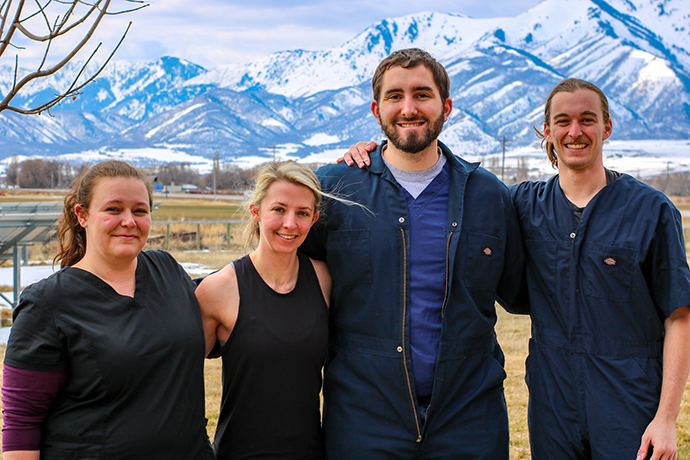When disease outbreaks cause public concern, experts work together to diagnose the disease and stop its spread. At Utah State University, veterinary medicine students are taught to diagnose and contain animal diseases and put skills into practice each year with a mock disaster training.
Veterinary students have already been trained to take blood, urine and fecal samples from animals for lab testing. Learning how to put on and take off protective equipment used in disease containment is the first step to keep students safe and prevent further spreading according to Kerry Rood, associate department head in the Animal, Dairy and Veterinary Sciences Department at USU.
“This year the training involved the discovery of a contagious, infectious agent, listeria monocytogenes, in some harvested meat product,” Rood said.
Listeria monocytogenes can be found in living and non-living animals. The bacteria are deadly and can be spread to humans, which is why Rood said it is important to train students on proper response and to be prepared in the event of an animal emergency that might require their involvement as veterinarians.
Associate Professor Rusty Stott, DVM, helps veterinary medicine student Vivien Burnell suit up with personal protective equipment.
Vet med student Ryley Carmen works with a horse being examined as part of a mock disaster exercise.
Vet med student Nate Goodwin waits to examine a patient.
Vet med students (l to r) Brianna Boone, Amy Wilkinson, Adam Ustach, and Corey Swanson, happy to shed their personal protective equipment and get outside during this year's mock disaster exercise.
“This is critically important for them,” Rood said. “We hope that they never have to use this training. Ever. In the event that this happens, they’re going to be a little bit more comfortable and better prepared so they can respond appropriately.”
During this year’s mock disaster training, students worked with state and federal veterinarians while using protective equipment, taking samples and working with animals. Barry Pittman Utah’s state veterinarian and program manager for animal health under the Animal Industry Division is familiar with emergency situations involving animals. Pittman receives up to 60 calls a year from producers, citizens and veterinarians dealing with foreign animal disease investigations.
“Many state and federal officials responsible for animal emergency response will work with and train a contingency of accredited veterinarians (private practitioners) to assist in times of natural disasters and disease emergencies,” Pittman said.
Pittman hopes USU students never have to use the training, but he says they must be prepared to work with state and federal officials as practicing veterinarians to protect the public and the animals they care for.
Contact: Kerry Rood, Kerry.rood@usu.edu, 435-797-1882 | Barry Pittman, bpittman@utah.gov, 801-538-7162
Writer: Bronson Teichert, Bronson.teichert@usu.edu





